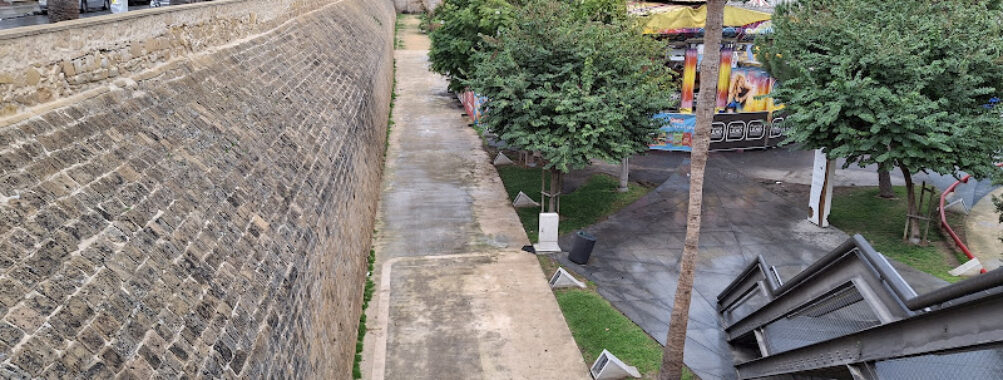
Nicosia Venetian Walls
“`html
Table of Contents
Description
The Venetian Walls of Nicosia are one of those places that quietly take your breath away—not because they’re flashy or grand in a modern sense, but because they whisper stories from centuries past. Standing before these 16th-century fortifications, you can almost picture Venetian engineers, sleeves rolled up, sketching out plans to defend the city from the Ottomans. And somehow, those same walls still stand tall today, encircling the old heart of Nicosia like a time capsule.
I remember the first time I walked along them. It was a warm afternoon, the kind where the sun paints everything gold, and I could feel the history in every stone. The walls aren’t just relics—they’re living reminders of Cyprus’s layered identity, shaped by Venetians, Ottomans, and the British. The circular design, punctuated by eleven bastions, feels almost artistic, even though it was built for war. Each bastion bears the name of a noble Venetian family, a subtle nod to the city’s Renaissance roots.
Today, the Venetian Walls are more than just a defensive structure—they’re a gathering place, a scenic walk, and a photographer’s dream. You’ll find locals strolling, kids playing, and travelers pausing to take it all in. The vibe is peaceful, but there’s this undercurrent of awe that never really fades. It’s the kind of spot that makes you slow down and think about how many people have stood there before you.
Sure, not every visitor falls head over heels at first sight. Some might say the walls look a bit worn or that the surrounding area could use more polish. But honestly, that’s part of their charm. They’re authentic, imperfect, and unapologetically themselves—just like the city they protect. If you’re the kind of traveler who appreciates history you can actually touch, then this place will speak to you.
Key Features
- 16th-century Venetian architecture: Designed by Giulio Savorgnan, the walls are a prime example of Renaissance military engineering.
- Eleven bastions: Each named after a Venetian noble family, forming a perfect circular fortification around the old city.
- Three main gates: Famagusta Gate, Kyrenia Gate, and Paphos Gate—each with its own story and architectural flair.
- Cultural landmarks nearby: The Famagusta Gate now serves as a cultural center hosting art exhibitions and performances.
- Panoramic views: From certain points, you can catch sweeping views of both the old and new parts of Nicosia.
- Accessible walking paths: Ideal for leisurely strolls, photography, and quiet reflection.
- Blend of history and modern life: The area within the walls is dotted with cafes, small museums, and artisan shops.
Best Time to Visit
If you ask me, spring and autumn are the sweet spots for exploring the Venetian Walls. Around April or October, the weather is just right—not too hot, not too chilly—and the light is perfect for photos. You’ll catch that soft Mediterranean glow that makes everything look like a painting. Summer can be intense, especially around midday, so if you’re visiting then, aim for early morning or late afternoon walks.
Winter has its own charm, though. The crowds thin out, and there’s something special about having the place almost to yourself. Bring a light jacket and maybe a coffee from a nearby café, and just wander. You’ll see the city in a different mood—quieter, introspective, almost poetic.
How to Get There
Getting to the Venetian Walls is easier than you might think. Nicosia’s old town is compact, and the walls practically define its boundaries. If you’re staying nearby, you can simply walk—most streets naturally lead toward the fortifications. For those coming from outside the city, buses and taxis are convenient options. The main gates—Famagusta, Kyrenia, and Paphos—are key entry points and easy to find on any map.
If you’re driving, parking can be a bit tricky inside the old city (the streets are narrow and sometimes one-way), so it’s usually better to park just outside and stroll in. Honestly, walking is the best way to experience the area anyway. You’ll catch little details—a carved stone here, a crumbling turret there—that you’d totally miss from a car window.
Tips for Visiting
Here’s what I’ve learned from wandering these walls more times than I can count. First, wear comfortable shoes. The paths can be uneven in spots, and you’ll want to climb a few bastions for the views. Bring water, especially in the warmer months—shade can be scarce in some sections. If you’re into photography, go during golden hour; the light hits the stone just right, and the shadows add this dramatic texture that’s pure magic.
Take your time. Don’t just snap a few photos and leave. Sit for a bit on one of the benches or low walls and watch life unfold around you. You’ll see locals chatting, kids on bikes, maybe even a street musician or two. That’s when the place really comes alive.
Also, explore beyond the obvious. The Famagusta Gate is stunning, yes, but wander toward the lesser-known bastions. Some have quiet little gardens or art installations that most tourists miss. And if you can, visit both during the day and at night. The walls are softly lit after sunset, creating a completely different atmosphere—romantic, mysterious, almost cinematic.
Lastly, keep an open mind. The Venetian Walls aren’t polished or overly restored, and that’s exactly what makes them special. They’re real, layered with history and a few scars, much like Nicosia itself. If you let yourself slow down and really absorb that, you’ll walk away with more than just photos—you’ll carry a piece of the city’s soul with you.
“`
Location
Places to Stay Near Nicosia Venetian Walls
Find and Book a Tour
Explore More Travel Guides
No reviews found! Be the first to review!